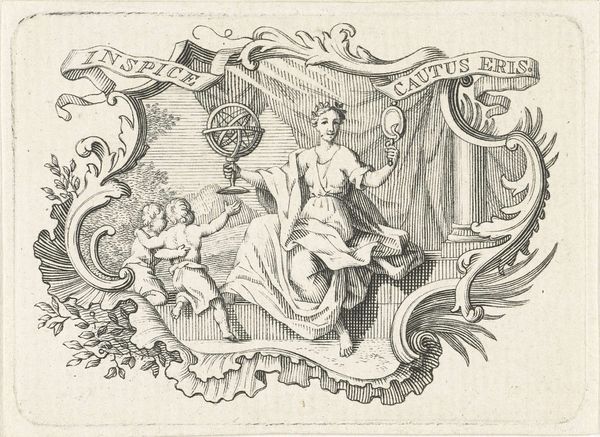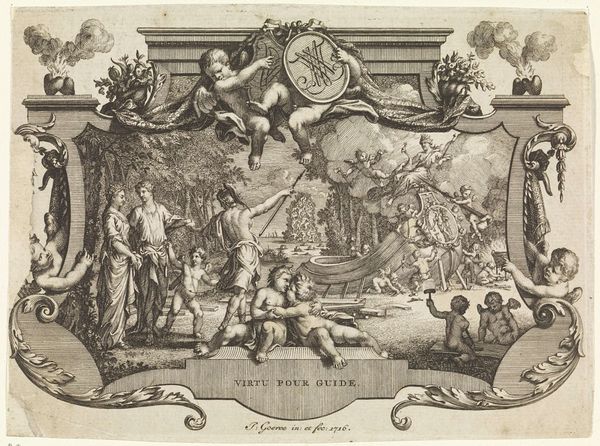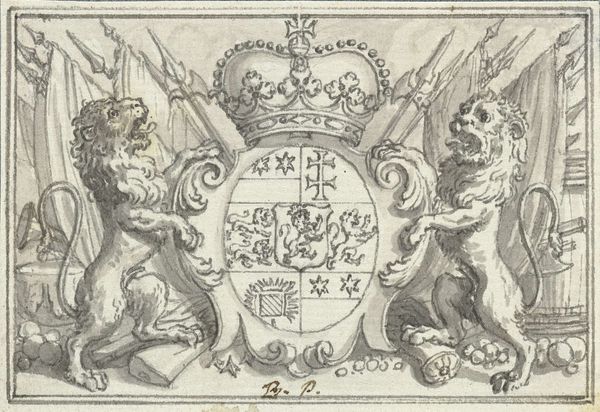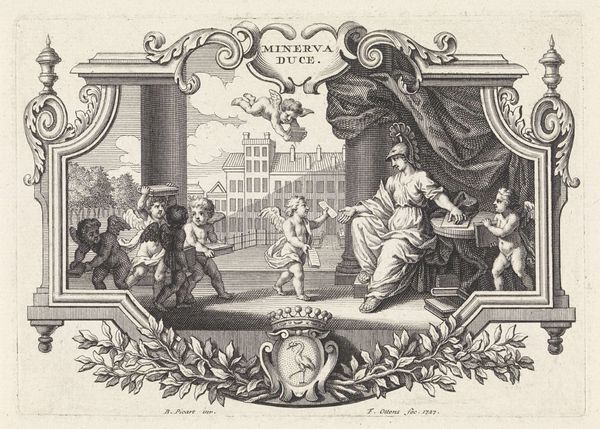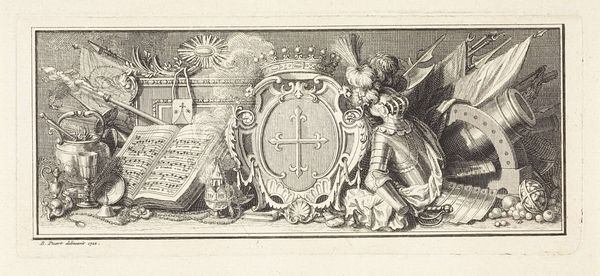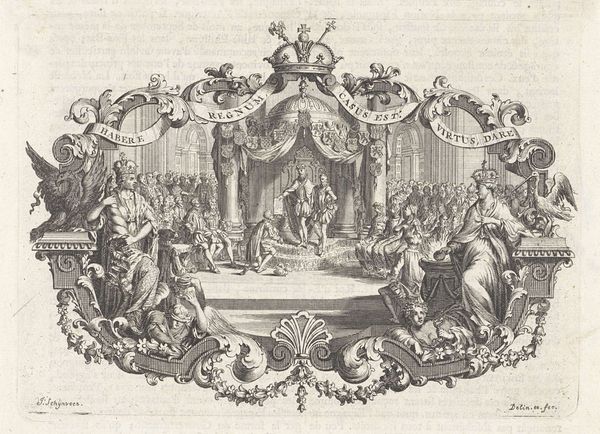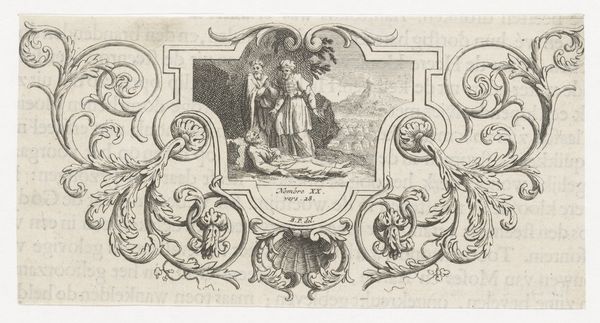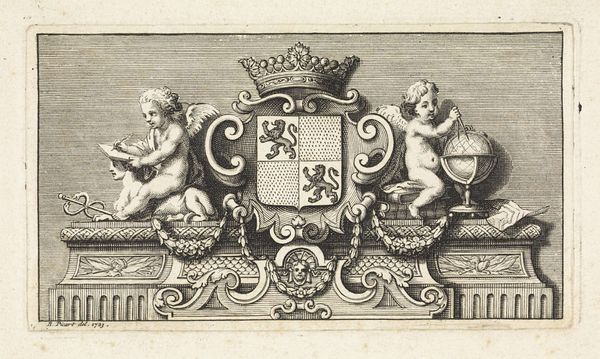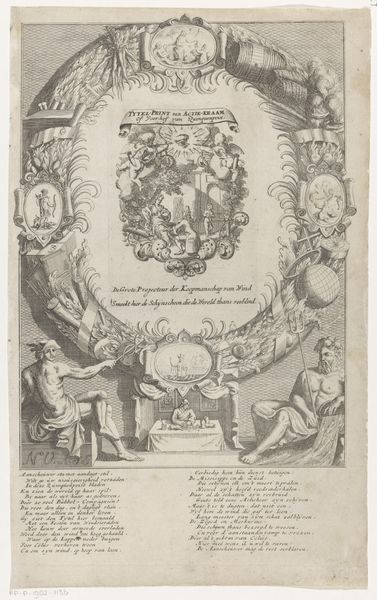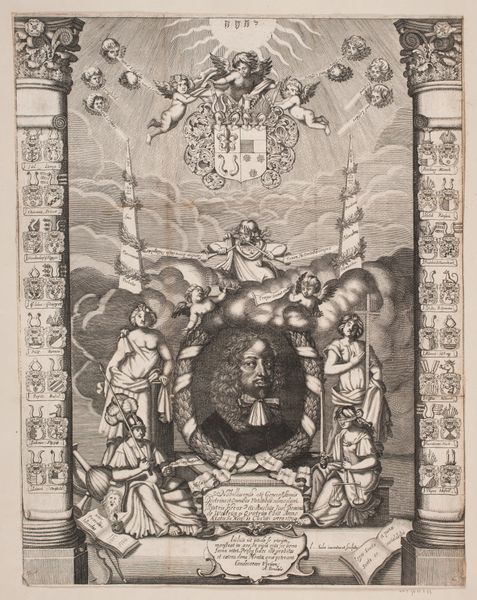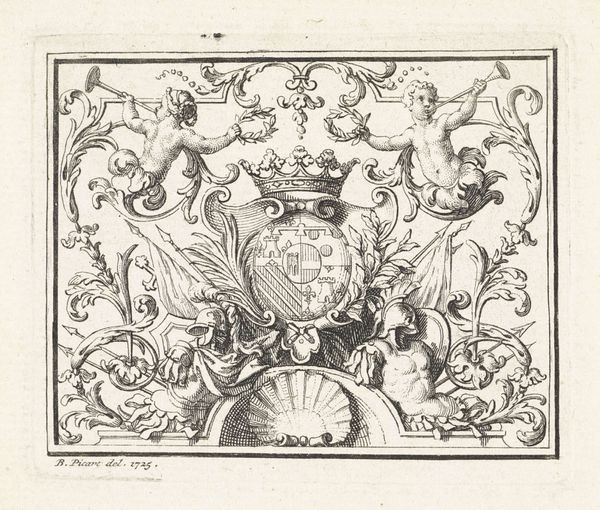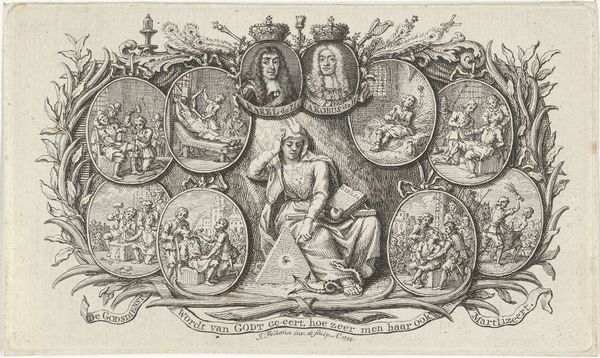
Dimensions: height 86 mm, width 168 mm
Copyright: Rijks Museum: Open Domain
Curator: Bernard Picart created this engraving, titled "Wapenschild van Caroline van Ansbach, prinses van Wales," in 1718. It's currently housed at the Rijksmuseum. Editor: The overall impression is overwhelmingly ornate, and definitely fit for royalty! All these cherubs and floral garlands exude a sense of privilege, don't they? Curator: Absolutely, and let’s dig a little deeper into that "privilege" aspect. Caroline of Ansbach was a prominent figure; as Princess of Wales, her identity and position were inextricably linked to political power, shaping not only her individual narrative but also influencing broader social dynamics within the British monarchy and its representations. Editor: And the escutcheon in the middle serves as a visual summation of that power. I'm drawn to the heraldic symbols - the lion and the unicorn are obvious, but it's all these other divisions of the shield, each telling a more specific story, each carefully chosen. The banners above reading "Ich Dien" adds more significance, suggesting this is not just a personal identifier, but carries duties too. Curator: Precisely. These weren’t arbitrary choices; they constructed her lineage, aligning her with specific territories, alliances, and inherited authority. This piece operates almost like a PR campaign, imprinting Caroline’s desired public image onto the cultural consciousness of the time. Consider how this contrasts with marginalized groups whose identities are so often deliberately obscured or misrepresented in historical narratives. Editor: Looking at the composition more, notice the way that Picart arranged everything, even something as simple as a floral wreath. Everything is so deliberately placed to draw your eye towards the heart of it all - the coat of arms. It underscores the central position of nobility, how every symbolic choice reinforces their prominence. Curator: A calculated assertion of power indeed. The entire visual language is geared toward cementing her image within a very specific political context. But also we could look at how the construction of identity via imagery can intersect with contemporary discourse around performativity and the power of visual representation in shaping social perception. Editor: These baroque symbols can transcend their specific moment in time. Visual elements such as the cherubs, lions, and unicorns continue to convey messages of importance today and serve as cues and connections to cultural concepts even today. Curator: I agree completely; and that makes this a fascinating, charged object. Thanks for unpacking all these details. Editor: It was my pleasure. Recognizing and interpreting these clues only enriches how we perceive images from centuries ago.
Comments
No comments
Be the first to comment and join the conversation on the ultimate creative platform.
